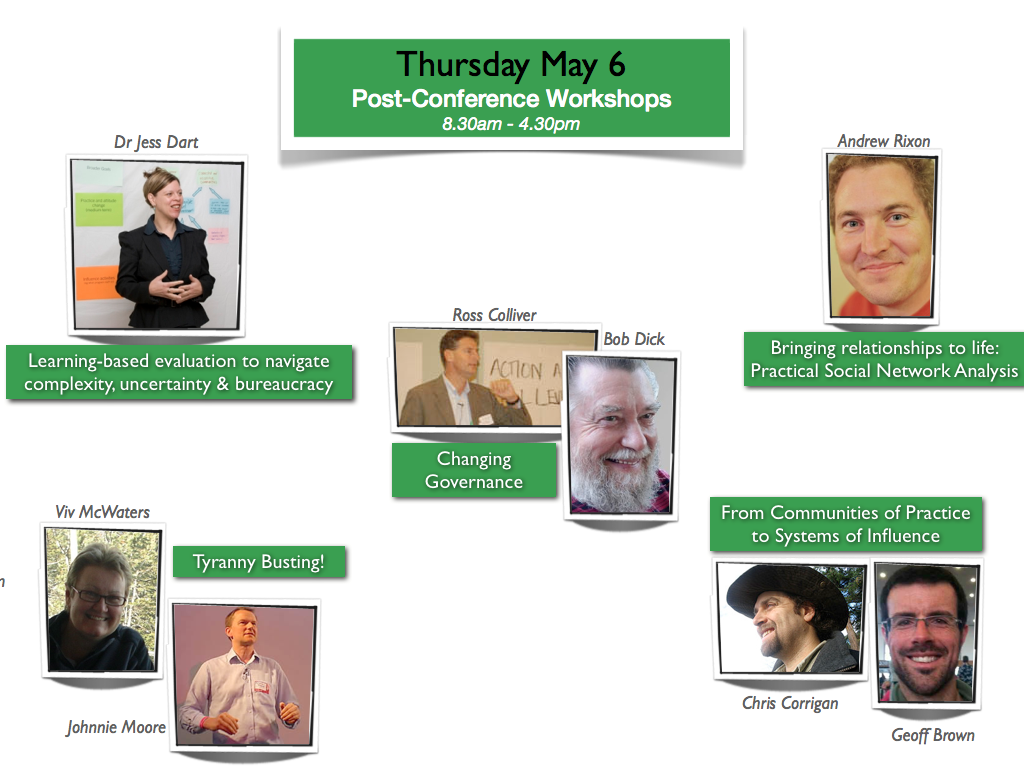I’ve been reading Tim Brown’s Change by Design and I’m surprised at how much the principles in the book about design thinking resonate around what Johnnie Moore, Chris Corrigan, Anne Pattillo, Geoff Brown and I have been doing for the Show Me the Change Conference.
In collaboration with the conference organisers and hosts we’ve created a design team to bring some edgy thinking and practices to the delivery of what could have been yet another predictable conference. We’re thinking this conference will be anything but predictable.
Tim says “design thinking relies on our ability to be intuitive, to recognise patterns, to construct ideas that have emotional meaning as well as functionality, to express ourselves in media other than words or symbols”. And while design thinking has mostly been applied to objects and their functionality, more and more the principles have been applied to services and experiences.
He also explains some other principles of design thinking:
- building on one another’s good ideas
- direct engagement with people
- genuine reciprocity of interests
- investigative learning
- exploring questions around ‘how might we…’?
- the challenge and excitement of applying design thinking to problems that matter
- finding ways to encourage individuals to move towards more sustainable behaviours
So it seems that a conference that explores complexity and the art of evaluation within a context of behaviour change for sustainability just calls out for design thinking.
Viv McWaters
